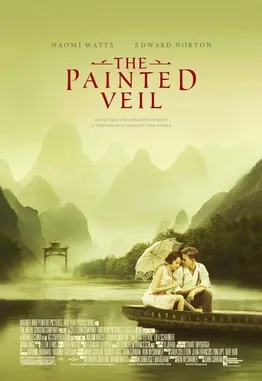Historical accuracy of The Painted Veil

Historical accuracy of The Painted Veil

Characters
Kitty Fane
Kitty is the fictional protagonist created by W. Somerset Maugham for his novel. Her personal journey of self-discovery is the core of the fictional narrative.
Dr. Walter Fane
Walter is a fictional character from Maugham's novel. His profession as a bacteriologist fighting cholera places him within a realistic historical context, but he is not based on a specific real person.
Charlie Townsend
Townsend is a fictional character representing the colonial social set and serving as the catalyst for the main plot's conflict.
Waddington
Though holding a plausible colonial position, Waddington is a fictional character from the novel who provides Kitty with perspective and friendship in the remote village.
Mother Superior
Represents the real presence of foreign missionaries (including French nuns) running orphanages and providing aid in China during this period. The specific character is likely fictionalized for the story.
Colonel Yu
Represents the rising tide of Chinese nationalism and the military figures involved during the era's political unrest. The specific character and his interactions are fictional.
More characters
Mr. Garstin
A fictional character within Kitty's backstory in London.
Mrs. Garstin
A fictional character driving Kitty's motivation to marry Walter.
Story
Kitty's superficial life / Marriage of convenience
This is the setup for the fictional narrative based on Maugham's novel.
Adulterous affair in Shanghai
The affair between Kitty and Charlie Townsend is a fictional plot device central to the novel and film.
Walter's revenge: moving to cholera zone
Walter forcing Kitty to accompany him to a cholera-stricken village as punishment is part of the fictional story.
Depiction of cholera epidemic reality
The film accurately portrays the devastating impact of a cholera epidemic – the rapid spread, high mortality, fear, rudimentary sanitation efforts, and the work of doctors and nuns trying to contain it.
Journey into rural China in the 1920s
Captures the difficulty and cultural immersion involved in traveling from cosmopolitan Shanghai into the remote Chinese interior during that period.
Foreign doctors/missionaries working in rural China
The presence of foreign medical personnel (like Walter) and religious missions (like the French convent) providing aid in remote areas of China during the 1920s is historically accurate.
Rising Chinese nationalism / Anti-foreign sentiment
The film accurately reflects the historical context of growing Chinese nationalism, civil unrest (warlords), and anti-colonial/anti-foreign sentiment prevalent in the 1920s.
Walter's work fighting the epidemic
Represents the kinds of public health measures (identifying contaminated water sources, promoting hygiene, isolation) employed by bacteriologists and doctors combating cholera outbreaks during the era.
Kitty volunteering at the orphanage/convent
This plot point, showing Kitty's personal growth and contribution, is part of her fictional character arc.
Walter and Kitty's marital reconciliation
The emotional core of the latter part of the film, where the couple finds respect and love amidst the crisis, is a fictional development (and notably differs from the bleaker resolution in Maugham's novel).
Walter contracting and dying from cholera
Walter Fane is a fictional character, and his death serves the film's narrative arc.
Kitty's pregnancy / Uncertain paternity
Part of the fictional storyline derived from the novel.
Setting
1920s Shanghai expatriate community
Effectively portrays the atmosphere of the international settlement in Shanghai, including the social lives, attitudes, and privileges of the British colonial and expatriate class.
Rural Chinese village (Mei-tan-fu) in 1920s
Filmed on location in China (e.g., Huangyao Ancient Town), the setting authentically represents the look and feel of a remote Chinese village during that period, contrasting sharply with Shanghai.
Depiction of cholera epidemic conditions
Visually conveys the grim reality of a cholera outbreak – widespread sickness, death, fear, makeshift medical facilities, and basic sanitation efforts (like using lime).
Foreign presence (British colonial, French nuns)
Accurately reflects the presence and roles of various foreign groups in China at the time – colonial administrators, medical personnel, missionaries, and diplomats.
Costumes and fashion (1920s British and Chinese)
Attire accurately reflects 1920s Western fashions (flapper styles for Kitty initially) and contrasts them with traditional Chinese clothing appropriate for the period and setting.
Transportation methods (Sedan chairs, boats, early cars)
Shows transportation methods consistent with the 1920s setting, including rickshaws/sedan chairs, river travel, and early automobiles in Shanghai.
Depiction of political unrest / Nationalism backdrop
Subtly but effectively incorporates the underlying political tensions, military presence (warlords/nationalists), and dangers faced by foreigners due to rising nationalism.
Convent / Orphanage setting
Represents the typical architecture and atmosphere of foreign-run mission compounds found in China during that era.
